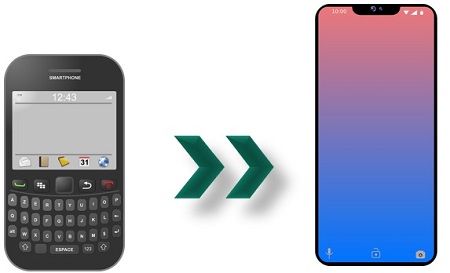 Upselling is the strategy of persuading your prospective customer to purchase a similar product with higher specifications and features, rather than going with the original choice.
Upselling is the strategy of persuading your prospective customer to purchase a similar product with higher specifications and features, rather than going with the original choice.
On the other hand, in cross-selling, the sales representative encourages the potential buyer to make the initial purchase first, and once the customer is done with the selection, the representative recommends a complementary or additional product to the buyer which adds to its value to the customer.
Upselling and Cross-selling are the two very effective techniques of marketing wherein the sales representative encourages the customer to buy more products or buy a better product. This not just adds to the existing sales revenue but also provides value to the customers. Here in this article, we are going to discuss the differences between cross-selling and upselling.
Content: Upselling Vs Cross-Selling
Comparison Chart
| Basis for Comparison | Upselling | Cross-Selling |
|---|---|---|
| Meaning | Upselling means to convince the buyer in purchasing the better version of a product which has a higher specification. | Cross-Selling is the recommendation of additional product to be purchased in combination with the main product to the existing customer. |
| What does it do? | Trading up something of better quality or price, of what is being demanded by the customer. | Offers related products to customers to persuade them to spend more. |
| Objective | To increase the actual value of the sale. | To increase the overall value of the sale. |
| Involves | Upgraded, Higher value or an Add-on item. | Complementary, Related or Connected Item. |
| Increases | Average Bill Value | Average Bill Value and Average Ticket Size |
Definition of Upselling
Upselling can be understood as a strategy of persuading customers to make a purchase of high end, premium product coupled with some additional features, than the one they actually intended to purchase, so as to increase the total sales value.
It can be said that in upselling the seller aims at selling the more profitable item to the customer or presents them the newest or better version of an item, with the purpose of making a larger sale. The technique is useful when the probability of buying it, is the highest.
It involves educating customers, communicating the benefits, highlighting differences and presenting discounts, in order to attract them.
In upselling, the seller often compares the main product with that of the premium one so as to show the additional features and specifications to the customer, that increases the price of the actual purchase.
Example: You might have noticed that when you go to buy a handset, the salesperson shows you a better version of it, and explains you its additional features which are not present in the handset which you have planned to buy. This technique of selling is known as Upselling.
Definition of Cross-Selling
Cross-Selling is a selling method in which the seller aims at encouraging the customer by suggesting to buy an additional product which is complementary or related to the main product based on customers interest and purchase of one of the company’s products. It not just completes the set but also helps in gaining maximum value from the original purchase.
The intent is to convince the customer to incur more by making him/her purchase extra items than he/she has decided to buy initially. In this, the seller attempts to take advantage of “just in case” outlook of the shoppers, so as to improve their shopping experience and also to earn the maximum revenue from them.
In other words, cross-selling is recommending other relevant products which the customer can try. For this, the seller logically identifies the best pair of product, which can possibly be sold. The perfect example of cross-selling is the “frequently bought together” section of the Amazon and the combo offers given by many retail outlets.
Example: Suppose you go to buy a laptop, the sales representative often tries to convince you to buy a mouse with it. This is called as cross-selling.
Key Differences Between Upselling and Cross-Selling
The differences between upselling and cross-selling are discussed in an elaborated form below:
- In upselling, the seller would emphasize on buying the better version of a product than the one which the customer has decided to buy, so as to increase the sales revenue. On the other hand, Cross-Selling is a selling technique which involves convincing the buyer to spend an additional amount to buy complementary products which match their existing deal, so as to increase the number of items sold, along with increasing the total sales value.
- In upselling, the seller seeks to trade up a product of better quality or price, of what is being demanded by the customer. As against, in cross-selling the seller offers related products to customers to persuade them to spend more.
- Upselling aims at increasing the actual value of sales, whereas in cross-selling the overall value of sales is increased.
- Upselling involves the selling of upgraded, higher value or an add-on item to the customers. Conversely, the complementary, related or connected item is offered for sale in the case of cross-selling.
- Upselling increases average bill value. On the contrary, cross-selling increases both, average bill value and average ticket size. Here, average bill value refers to the average purchase made by a customer, and the average ticket size is the average sale per customer.
Conclusion
Upselling and Cross-selling is a great tool to increase the overall value of the deal, as well as it helps in introducing a wide variety of products. However, in both the strategies the customers are approached and convinced differently.
If we talk about upselling, the aim is to sell a superior, expensive, high-end product to the customer, in spite of the product the customer has decided and demanded to buy, by communicating the additional features. On the flip side, cross-selling is all about selling additional products to the customers, which are related to the existing purchase.






Leave a Reply